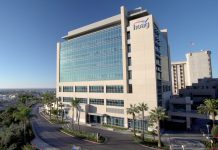Ever wonder what happens to the items you put into your trash can?
Newport Beach has a Refuse Crew of 30 that manually collects refuse each day. It all goes to a transfer station, where a city-contracted company, CR&R, takes it to a “materials recovery facility” — called a MRF, pronounced like “Murph.”
All cities are required by the state to recycle more than 50 percent of all refuse, and Newport Beach has exceeded that goal. The process is: on designated days, residents place comingled refuse in their own containers that are to city standards.
This refuse is hand collected and taken to a transfer station where CR&R transports the solid waste to a MRF where the waste is sorted. A MRF is uniquely designed to separate and recover recyclable materials from unsorted household waste.
(In Newport Coast, CR&R provides the containers and performs automated collection. Refuse is taken to the MRF same as the rest of the City.)
The benefit of this program is that it requires refuse to be diverted from landfills. I recently toured Prima Descecha Landfill, and they reported waste is down 40 percent, primarily due to a drop in construction. This validates my theory that we should add a forth “R” to Reduce, ReUse and Recycle by adding Recession, perhaps the best driver of behavior change.
The cost of residential solid waste collection is paid through the city’s general fund, and a $2.93 per month recycling fee is on residents’ bi-monthly water bills. CR&R pays the City of Newport Beach a fee to take the refuse from the transfer station to the MRF, where CR&R generates the value of the recyclables. That revenue offsets the cost of refuse collection.
Commercial hauling for apartments, business, restaurants and building construction is performed by one of 29 franchised haulers. The city s in process of streamlining the process of franchise fees and permits. My opinion is that having three haulers allows for collusion and having five encourages market forces and competitiveness. And my question is, doesn’t having 29 haulers have an adverse impact on roads and infrastructure?
So, yes, things you put in your trash are recycled. A coupld of best practices are if you place a large amount of newspapers in the container, place them in a plastic bag to prevent contamination, and to seal wet refuse so the liquids do not spoil recyclables.
Once the recyclable goes into the trash container, you need a permit to remove it. Scavenging does exist, so if you observe it, call NBPD or Code Enforcement.
If you have bulky items, the city would appreciate you calling (949) 644-3055 to facilitate efficient pick up. Household hazardous waste of electronics can be donated to a Goodwill, or contact the County Household Waste Center (Irvine and Huntington Beach) for disposal of things like paint and other chemicals.
Changing gears: Ever pick up a plastic bottle and see a triangle with the three arrows around a number in the middle? That is a Resin Code, and there are seven of them. Demand for these products determines how and how much of them are recycled. If China, for example, has demand for cardboard, then everyone is scrambling to recycle cardboard as it has value. For the most part the Nos. 1 and 2 plastics have a clear and defined value market. No. 1 is PET or polyethylene terephthalate, and is most commonly a soft drink bottle. When recycled, it will become polyester and clothing. No. 2 is HDPE or high-density polyethylene used in milk jugs and grocery bags. This becomes plastic lumber, playground equipment and trash cans. Next time you’re in a Starbucks, perhaps you would utilize your purchasing power to Vote Green Everyday by asking why their plastic cups are a No. 5, that ould be converted to a No. 2?
Visit bottlesandcans.com for more information on recycling.
Thank you to Maurice Turner in the General Services Department for some excellent insights that NB Indy can share with residents.




